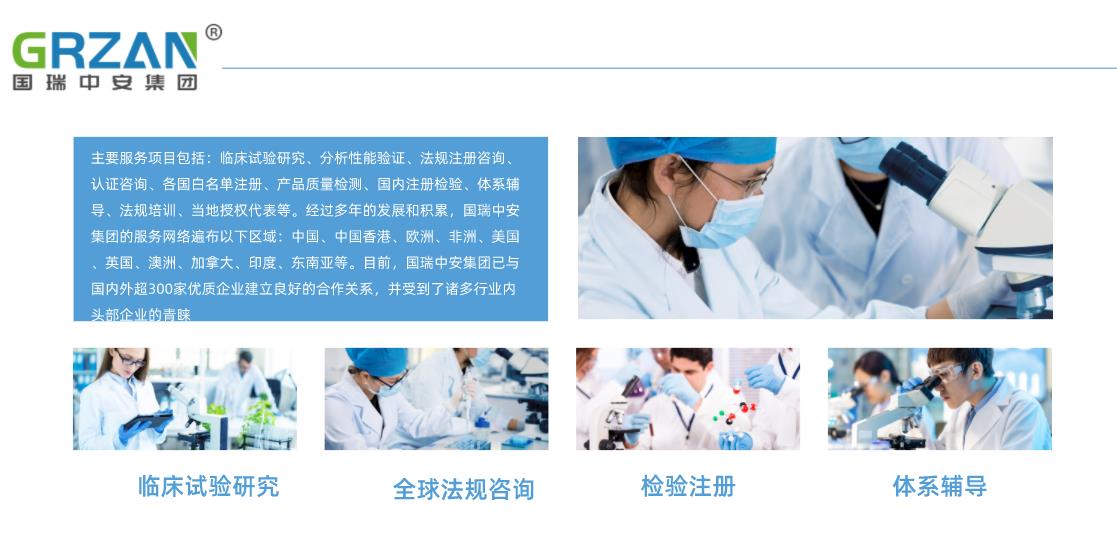What is the process for exporting medical devices to the U.S.?
Category:企业动态
Date:2024-12-24 17:11:12
Author:
Source:
Exporting medical devices to the United States involves several regulatory steps to ensure compliance with the U.S. Food and Drug Administration (FDA) requirements. Here's an overview of the process:
Exporting medical devices to the United States involves several regulatory steps to ensure compliance with the U.S. Food and Drug Administration (FDA) requirements. Here's an overview of the process:

1. Determine the Device Classification
- Class I: Low-risk devices (e.g., bandages, surgical instruments). Most Class I devices are subject to general controls and may not require premarket approval but must still be registered with the FDA.
- Class II: Moderate-risk devices (e.g., infusion pumps, X-ray machines). These devices typically require 510(k) clearance (premarket notification) to show that the device is substantially equivalent to an already marketed device.
- Class III: High-risk devices (e.g., pacemakers, artificial heart valves). These devices require Premarket Approval (PMA), which involves more extensive testing and clinical data to demonstrate safety and effectiveness.
2. Establish FDA Registration and Device Listing
- FDA Establishment Registration: Manufacturers must register their establishment with the FDA. This applies to both U.S.-based and foreign manufacturers. Registration needs to be updated annually.
- Device Listing: Manufacturers must list all devices they intend to market in the U.S. This step is necessary for FDA oversight and includes device-specific information (e.g., product code, classification, intended use).
3. Appoint a U.S. Agent (for Foreign Manufacturers)
- Foreign Manufacturers must designate a U.S. Agent to act as a liaison between the FDA and the manufacturer. This agent is required to facilitate communication, regulatory notifications, and inspections, ensuring the manufacturer meets U.S. requirements.
4. Premarket Notification or Approval
- 510(k) Notification: For most Class II devices, manufacturers must submit a 510(k) premarket notification to the FDA, demonstrating that the device is substantially equivalent to a device already marketed in the U.S. (predicate device).
- Premarket Approval (PMA): For Class III devices, manufacturers must undergo the PMA process. This requires extensive documentation, clinical trial data, and evidence to prove the safety and efficacy of the device.
5. Compliance with Quality System Regulations (QSR)
- Manufacturers must establish and maintain a Quality Management System (QMS) that complies with the FDA’s Quality System Regulation (QSR) under 21 CFR Part 820. This system ensures that the device is consistently produced and controlled according to FDA standards.
- Foreign manufacturers must also comply with these regulations, and the FDA may inspect foreign facilities to ensure compliance.
6. Labeling Requirements
- Devices must comply with FDA labeling requirements under 21 CFR Part 801. Labels must include:
- Manufacturer information
- Intended use
- Directions for use
- Warnings, precautions, and contraindications
- Any other information necessary for safe and effective use
7. Customs and Importation
- FDA Import Requirements: When the device enters the U.S., it must be in compliance with FDA regulations. U.S. Customs and Border Protection (CBP) and FDA work together to ensure that imported medical devices meet FDA standards.
- Importers must file FDA entry notices and FDA form 2877 with U.S. Customs. The FDA will review the import documents and, in some cases, may inspect the device at the point of entry.
8. Post-Market Surveillance and Reporting
- After the device is on the market, the manufacturer is responsible for:
- Adverse Event Reporting: Reporting adverse events or device defects to the FDA through the MedWatch system.
- Recalls: If the device is found to be defective or harmful, the manufacturer must initiate a recall in accordance with FDA guidelines.
- Post-market Studies: Some devices, especially Class III devices, may be subject to post-market surveillance or clinical studies to monitor their safety and performance.
9. FDA Inspections and Audits
- The FDA may conduct inspections to ensure that manufacturers comply with FDA regulations, including the Good Manufacturing Practice (GMP) and Quality System Regulations (QSR). This could include inspecting the manufacturing facility and verifying device compliance.
10. Maintain Ongoing Compliance
- Manufacturers must ensure continued compliance with FDA regulations throughout the life of the device. This includes annual registration renewal, timely reporting of adverse events, and implementing corrective actions when necessary.
Contact Us:
Whatsapp or Wechat:+86 15816864648;email address:hito.lin@grzan.cn
.png)
